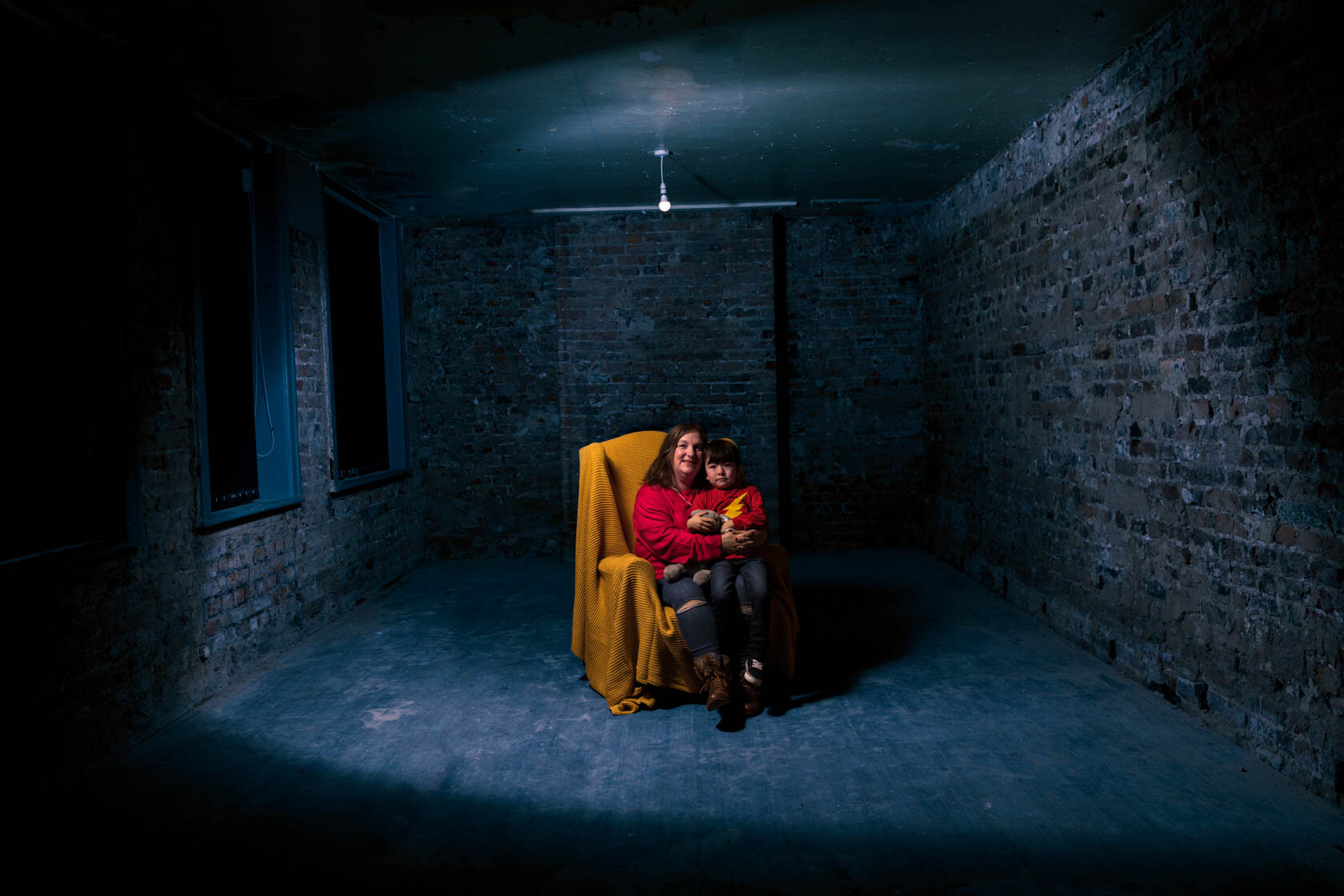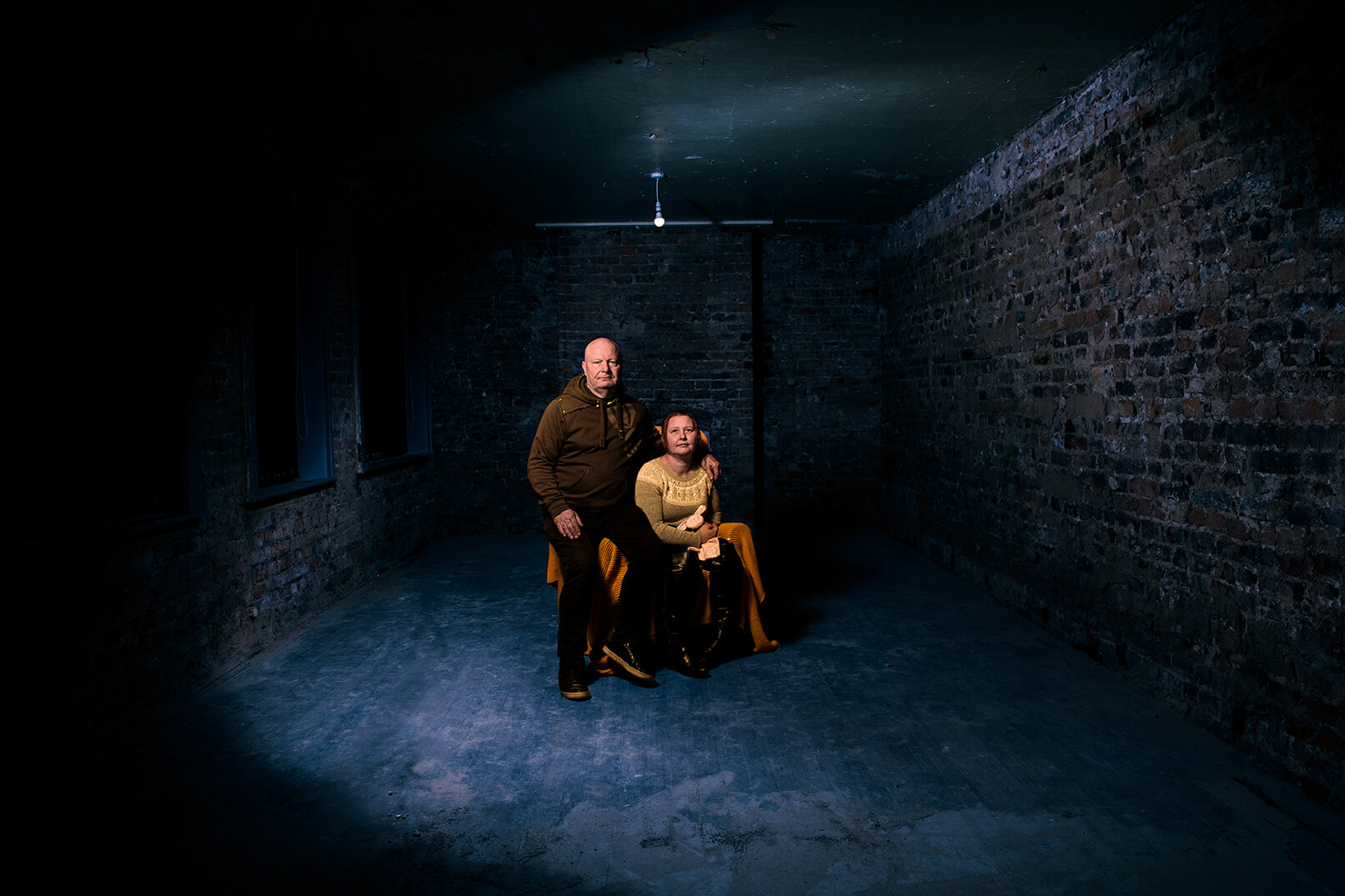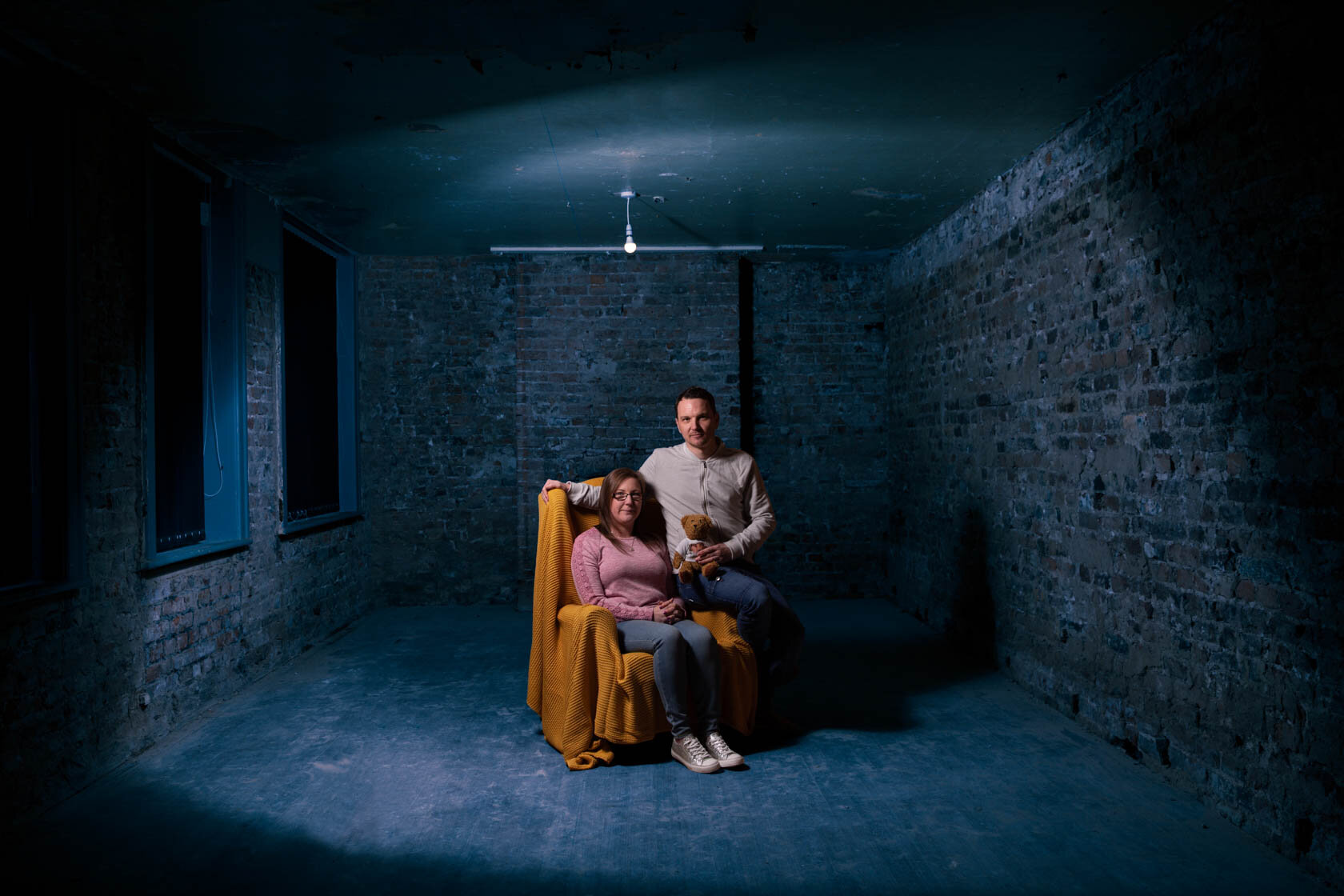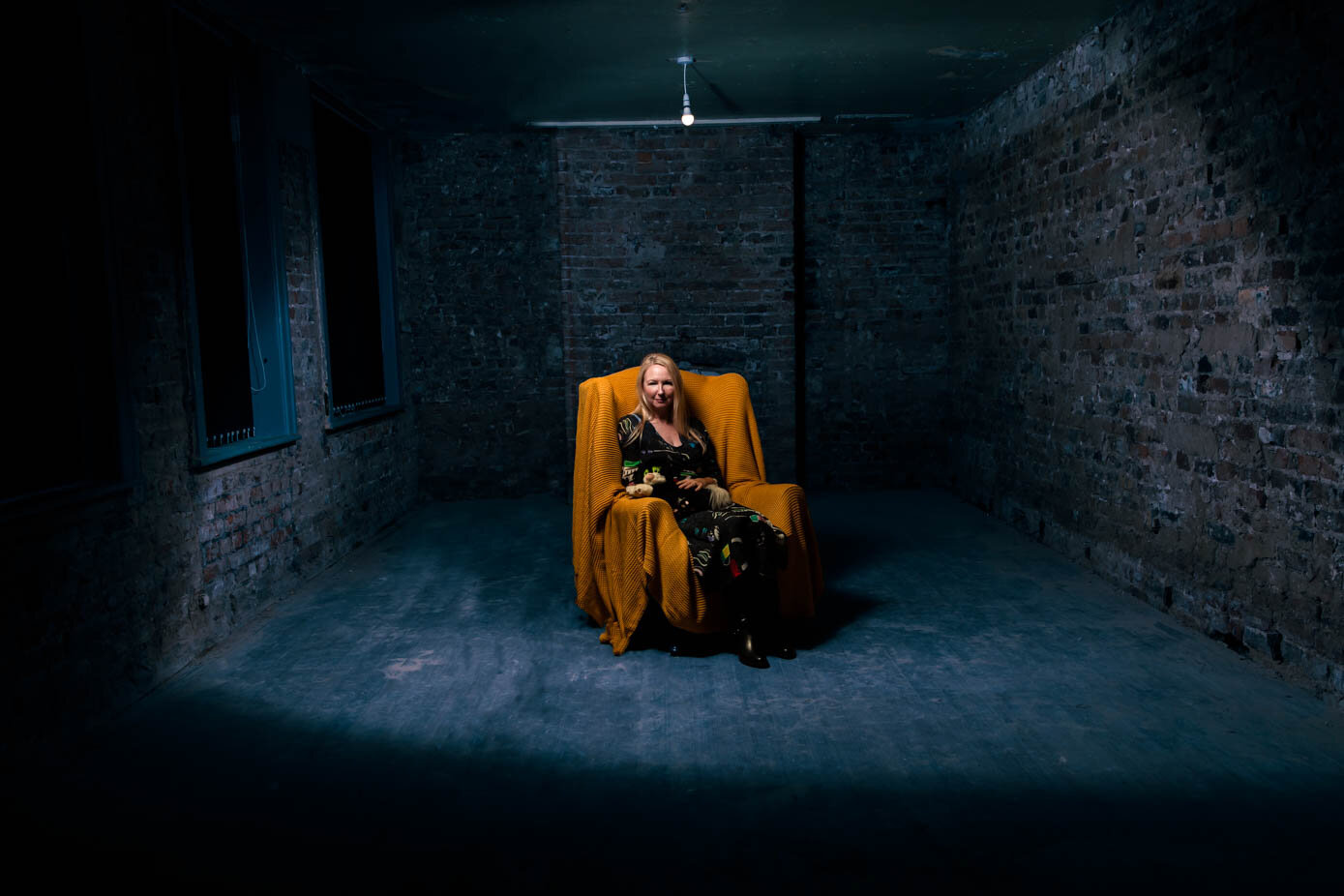Megan
“I know I'm lucky to have other children whom I love dearly and would do anything for, there's a Megan hole in my heart that can never be filled but I carry on with that hole, my heart beating in a slightly different rhythm than it did before I lost her.”
30% of children diagnosed with a rare disease die before their 5th birthday. Their families feel isolated and often their loved ones simply do not know what to do or say to support them. Sometimes all they need is to simply know someone is there for them and that they can talk about their loved one as and when they need to.
This project was designed to start the conversation about child bereavement due to rare disease and highlight the need for more support for families. We recently met Liz Parton who explained about her daughter Megan.
“Megan was a happy little girl, she was really bubbly and loved to touch your face, be next to people and have them talk to her. She needed you close so she could see you better. It just meant that you had more of a connection to her.
We did a lot sensory play. She loved shiny things, things that made noises and she could rattle, anything she could touch or mouth, like Zebedee, she loved to just play with him, almost wrestle him actually. She was a happy, content little child although she didn’t like to do her physio, in fact she hated the person who came to do the physio. Megan was always quite adamant she didn’t want to do bending and rolling and being put into positions that she didn’t really like, so she made sure we were aware that she didn’t like it.
Megan was our first born so it was all very new for us. She had a few issues before she was born as she measured quite small. She was quite an easy baby as on the whole she was relaxed, didn’t really cry that much, it was more of a bleat than a cry. She quite soon began to fall a little behind with some milestones and then we had issues with her eyes. She had cataracts and so she had to have an operation, when she was about 4 months old, and then she had to have little contact lenses in her eyes which I had to take in and out as she got older.
She went to nursery for a little bit before she died. She really loved to go to nursery, she loved the people there and enjoyed spending time with them. There were various things that she brought home, little artistic things that they’d helped her to create which I’d never probably have done myself. She enjoyed being there and loved swimming, hydrotherapy, all those kind of things.
When Megan was 9 months she was diagnosed with Cockayne Syndrome, which came from both me and her dad, we’d never even heard of it before that point. Part of the condition is that they have dwarfism, they have quite small heads and often will have problems with their hearing as well as their eyesight.
It was always difficult to describe her condition. As soon as you said Cockayne Syndrome people immediately thought of the drugs, which of course have nothing to do with it.
“It means everything to be able to speak to other families who know what we are going through. They completely understand what it has been like in a way that others simply will never understand.”
When we were given her diagnosis, they told us that she would have a limited life expectancy and was unlikely that she would reach her teens. Telling people was hard. We started with our parents and asked them to tell other people. To keep on repeating it to everyone would have been incredibly hard so we just asked them to share the information.
Most people reacted with sympathy, some just don’t really know what to say which is fine. There is a degree of silence around child bereavement and because of it you don’t know who else has lost children. Knowing when to bring Meg into conversation is hard. I usually wait until I know someone a bit better. If someone asks about my children I either try to avoid the actual question or sometimes I will just mention my living children, which doesn’t make me feel particularly good.
Being a young(ish) mum and Meg being the first it was quite isolating - even when I did start to make friends through playgroups, once the other children began to develop more and Meg was left behind I couldn't share in so many of the conversations, as I hadn't had the experience with Meg. Once she had her nasal tube, to help with feeding, I felt very self-conscious and protective of her as I didn't want people staring.
Once in a taxi, the driver asked me what was wrong with her. I hate that phrase as there was nothing 'wrong' with her from my point of view, she was perfect as she was, just needed a little help feeding (pre-diagnosis). Though I understand he just wondered why she had a tube on her face , it’s just an unfortunate phrase when you can already feel like you and your family don't fit in the 'normal' way of things.”
As part of this project we created sculptures of each child using photographs and 3D scanning technology
“Megan died when she was 3 years and 1 month exactly. Because of her diagnosis, we knew time was limited. We tried our best to keep her healthy in the hope it would prolong her life. In the end she had a little bit of illness just before she died and so it came as a huge shock.
We have some lovely memories and so many photos. It’s nearly 10 years since we lost her and yet I still get really upset.”
“When Megan died, I coped just day by day, hour by hour. We were lucky to have another child who helped us to keep going. He was 14 months old so unfortunately, he doesn’t have probably very many clear memories of Megan but we have lots of photos and we’ve shared lots and lots of stories. We have two boys now.
The first year is still completely a blur so I don’t actually remember an awful lot. I know people would ring me regularly and see how I was and family would visit but I don’t actually remember much more than that.
Even after all this time the boys will do or say something and it will completely throw me. Sometimes, you’ll be having a conversation about something else entirely and they will just randomly say “what colour hair did Meg have?”. You feel an expectation that it’s been such a long time that you shouldn’t feel as upset, but you do. It comes in waves. You can have long periods of time when you don’t feel quite so low and then it just hits you in the middle of nowhere.
Though looking after Meg was difficult and tiring, as with any child, it was that much harder knowing time was limited but I wouldn't have missed it for the world. She has left her mark on my heart .
I know I'm lucky to have other children whom I love dearly and would do anything for, there's a Megan hole in my heart that can never be filled but I carry on with that hole, my heart beating in a slightly different rhythm than I did before I lost her. She made me as I am now and never will I be the same mum for my others as I was with and for her, and sometimes you miss the person you were as well as that special person you lost.”
Hear the other Stories
What is Cockayne Syndrome?
Cockayne Syndrome (CS) is a rare disorder, characterised by small stature, microcephaly (having a small head) , developmental delay and premature pathological ageing. It is caused by mistakes in one of two genes: CSA (also called ERCC8) or CSB (also called ERCC6). In order to develop CS, an affected individual must have mistakes in both copies of one of these genes. In most cases, each parent will be a carrier for the condition (i.e. they have a mistake in one of their copies of the gene). This is described as recessive inheritance and means that there is a 25% chance that any children the couple have will be affected by CS.
Cockayne Syndrome is a variable condition, making early diagnosis difficult. Birth weight and head circumference are often normal, as is early development. Reduction in how fast an affected child grows, leading to small stature with a disproportionately small head (microcephaly), may be the first clue to the diagnosis. After the age of 12 months, development is often delayed. Other clinical problems in CS include hearing loss (of any type, but affecting both ears), cataracts, visual impairment due to retinal degeneration, tremor, walking and balance problems (ataxia), joint contractures, progressive loss of body fat and abnormal sensitivity of skin to sunlight. Affected individuals may not experience all of these features. Children with CS can look completely normal early in life, but many develop a sunken appearance to their eyes, and some have facial features (eyes and nose) that appear a little closer together than expected (described as crowded facial features).
Cockayne Syndrome is a progressive and incurable condition, with a mean age at death of 8.4 years. The development of early cataracts (under 3 years) is the most significant indicator of how a patient is likely to progress. Approximately 60% of patients with early cataracts survive to 5 years; for those who have no cataracts or develop them after 3 years of age, survival at 5 years is approximately 95%. However, there can be considerable differences between affected members of the same family, making it difficult to predict long term outcomes in CS. (Source: Amy and Friends)
If you would like more information about Cockayne Syndrome, you can contact Amy and Friends online at www.amyandfriends.org.
If you wish to discuss this project or reproduce any images or story, please contact ceri@samebutdifferentcic.org.uk. The photographer on this project is Ceridwen Hughes (www.ceridwenhughes.com)









